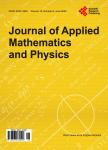Least Squares Hermitian Problem of Matrix Equation (<i>AXB</i>, <i>CXD</i>) = (<i>E</i>, <i>F</i>) Associated with Indeterminate Admittance Matrices
Least Squares Hermitian Problem of Matrix Equation (<i>AXB</i>, <i>CXD</i>) = (<i>E</i>, <i>F</i>) Associated with Indeterminate Admittance Matrices作者机构:School of Mathematics and Computational Science Wuyi University Jiangmen China KaiQiao Middle School in KaiPing City Jiangmen China
出 版 物:《Journal of Applied Mathematics and Physics》 (应用数学与应用物理(英文))
年 卷 期:2018年第6卷第6期
页 面:1199-1214页
学科分类:07[理学] 0701[理学-数学] 070101[理学-基础数学]
主 题:Matrix Equation Least Squares Solution Least Norm Solution Hermitian Indeterminate Admittance Matrices
摘 要:For A∈CmΧn, if the sum of the elements in each row and the sum of the elements in each column are both equal to 0, then A is called an indeterminate admittance matrix. If A is an indeterminate admittance matrix and a Hermitian matrix, then A is called a Hermitian indeterminate admittance matrix. In this paper, we provide two methods to study the least squares Hermitian indeterminate admittance problem of complex matrix equation (AXB,CXD)=(E,F), and give the explicit expressions of least squares Hermitian indeterminate admittance solution with the least norm in each method. We mainly adopt the Moore-Penrose generalized inverse and Kronecker product in Method I and a matrix-vector product in Method II, respectively.



